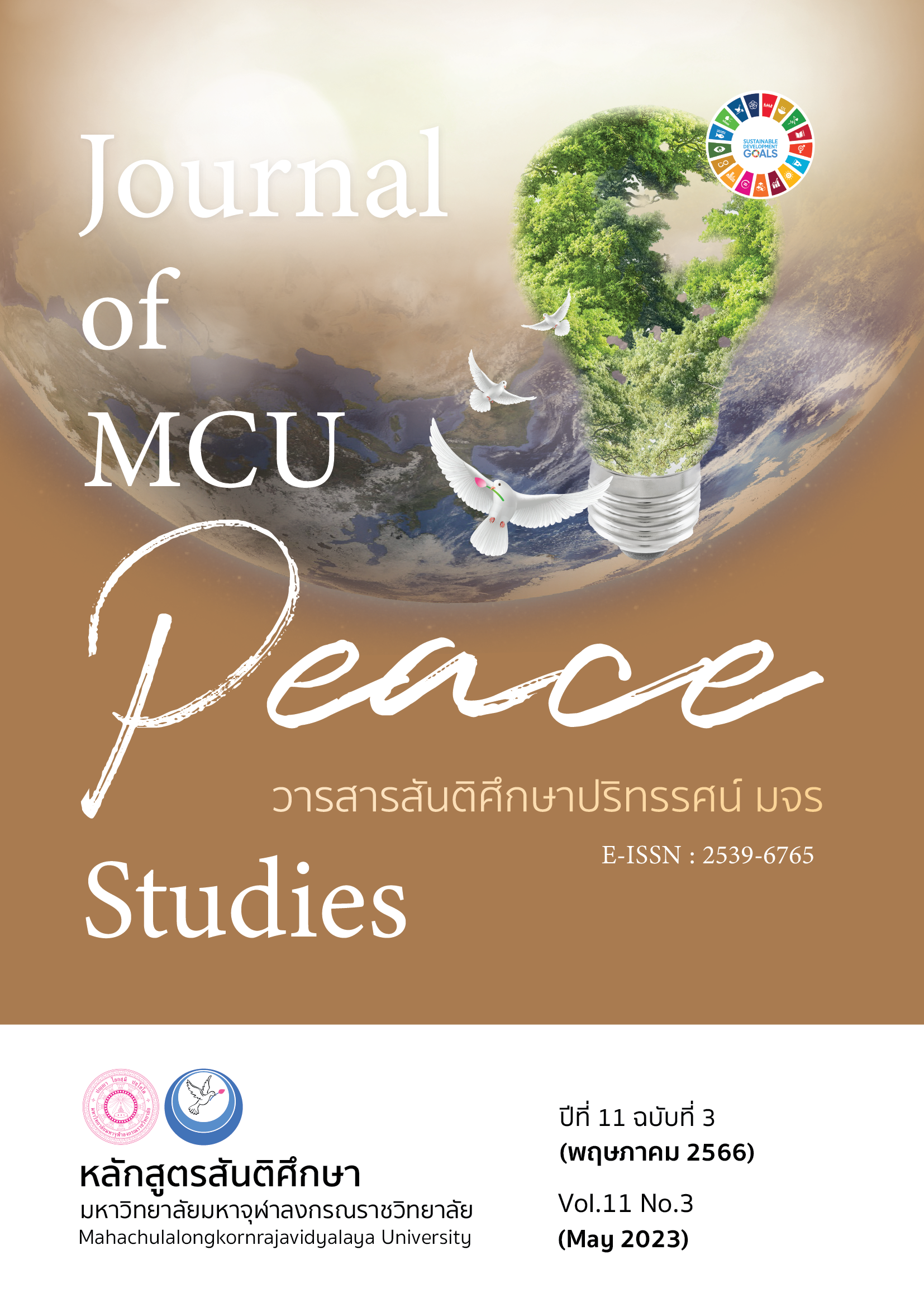การสื่อสารของผู้หญิงล้านนาเพื่อเสริมสร้างอำนาจ ในสื่อพิธีกรรมบูชาบรรพบุรุษ (ผีปู่ย่า)
Main Article Content
บทคัดย่อ
บทความวิจัยนี้มีวัตถุประสงค์เพื่อวิเคราะห์การสื่อสารของผู้หญิงล้านนาต่อการเสริมสร้างอำนาจ จากสื่อพิธีกรรมบูชาบรรพบุรุษ (ผีปู่ย่า) ด้วยการศึกษาปฏิบัติการเชิงอำนาจของผู้หญิงล้านนาผ่านการสื่อสาร ที่วางแผนไว้ให้บรรลุเป้าหมาย โดยใช้การวิจัยเชิงคุณภาพ เก็บข้อมูลจากการสัมภาษณ์เชิงลึก การสังเกตการณ์ภาคสนามแบบมีส่วนร่วม นำข้อมูลมาวิเคราะห์ภาคตัดขวางเพื่ออธิบายการสื่อสารเสริมสร้างอำนาจเฉพาะ ในสภาพการณ์ปัจจุบัน และนำเสนอข้อมูลการวิจัยแบบพรรณนา
ผลการวิจัยพบว่า การสื่อสารของผู้หญิงล้านนาต่อการเสริมสร้างอำนาจจากสื่อพิธีกรรมบูชา บรรพบุรุษ (ผีปู่ย่า) ประกอบด้วย 4 กลุ่ม คือ กลุ่มแรกเป็นการสื่อสาร ผู้หญิงล้านนาทำหน้าที่เป็นทั้งผู้ส่งสาร ตัวเนื้อหาสาร ตัวสื่อบุคคล และผู้รับสารในเวลาเดียวกัน กลุ่มที่สองเป็นคุณลักษณะเฉพาะ ได้แก่ การยืดหยุ่นและปรับเปลี่ยนได้ตามสถานการณ์ การมีหลากหลายโฉมหน้า การทำงานได้หลายระดับของการสื่อสาร ความสามารถเชื่อมร้อยคนในชุมชน บทบาททางสังคม สถานภาพทางสังคม และการสั่งสมทุนด้านต่างๆ กลุ่มที่สามเป็นสมรรถนะทางการสื่อสาร ได้แก่ ความสามารถทางการสื่อสาร (ความรู้ในบริบทชุมชน และการวิเคราะห์ผู้รับสาร) ทักษะในการสื่อสารของผู้หญิงล้านนา (การเลือกใช้สื่อแบบประสานสื่อเก่าและสื่อใหม่ และการเลือกใช้เนื้อหาสาร) กลยุทธ์ในการสื่อสาร (การประกอบสร้าง การรื้อถอนความหมาย การสร้างความหมายใหม่ การเล่าเรื่อง การผสมผสานความรู้เก่าและใหม่ และการใช้เหตุการณ์ปัจจุบัน) กลุ่มที่สี่เป็นประเภทของอำนาจที่ใช้ทำการสื่อสาร ตั้งแต่อำนาจเหนือ อำนาจสู่การกระทำใหม่ อำนาจร่วม และอำนาจภายในที่เกิดจากตัวปัจเจกบุคคล จึงจำเป็นต้องทำให้ครบทุกคุณลักษณะตามการจัดแบ่งกลุ่มเพื่อให้ยังคงรักษาฐานอำนาจไว้ได้
Article Details

อนุญาตภายใต้เงื่อนไข Creative Commons Attribution-NonCommercial-NoDerivatives 4.0 International License.
ทัศนะและความคิดเห็นที่ปรากฏในบทความในวารสาร ถือเป็นความรับผิดชอบของผู้เขียนบทความนั้น และไม่ถือเป็นทัศนะและความรับผิดชอบของกองบรรณาธิการ ยินยอมว่าบทความเป็นลิขสิทธิ์ของวารสาร
เอกสารอ้างอิง
Aksrondit, T. (2009). Spiritual Dance Rituals: Reflections on Social Bargaining Power Phenomenon. Chiang Mai: Tarnpanya Company.
Bourdieu, P. (1986). “The Forms of Capital” in Handbook of Theory and Research for the Sociology of Education. New York: Greenwood.
Chaisompan, S. (2002). Women’s Roles in the Transmission of Beliefs and Rituals in Northern Communities. (Master’s Thesis). Graduate School: Chiang Mai University. Chiang Mai.
Durkheim, E. (1964). The Elementary Forms of the Religious Life. London: George Allen & Unwin Ltd.
Foucault, M. (1980). Power Knowledge: Selected Interviews and Other Writings. New York: Pantheon Books.
Hinviman, S. (2013). A Knowledge Synthesis of Ritual Media and the Development of Local Community. Bangkok: The Thailand Research Fund (TRF).
Kaewthep, K. (2017). Tools for Community Culture and Media Education Rituals. Bangkok: Princess Maha Chakri Sirindhorn Anthropology Centre Printing.
Mekrugsawanich Kampe, O. (2004). The Role of Communication in Contributing to the Empowerment of Women Local Governance. Bangkok: The Thailand Research Fund (TRF).
Melkote, S. R., & Steeves, H. L. (2015). Communication for Development Theory and Practice for Empowerment and Social Justice. (3rd ed.). New Delhi: Sage Publications.
Starhawk. (1987). Truth or Dare: Encounters with Power, Authority and Mystery. San Francisco: Harper & Row.
Thammathi, S. (2011). Spiritual in The Belief of Lanna. Chiang Mai: Rom Phayom Printing.
Thongthirakul, N. (2007). Community Communication Process in Maintaining Traditional Worship of “Phi Poo Ya” in Workaew Sab District, Hangchat, Lampang Province. (Master’s Thesis). Faculty of Communication Arts: Chulalongkorn University. Bangkok.
Tippalert, A. (2005). Personal Media Communication Competence and Community Empowerment for Development. Bangkok: The Thailand Research Fund (TRF).
Tisdung, K. (2016). Borderland and Diversity of Belief Systems: Contested Sacred Space and Symbolic Domination. Bangkok: The Thailand Research Fund (TRF).
Wongthet, P. (2006). Gender in Southeast Asia. Bangkok: Ruenkaew Printing.


